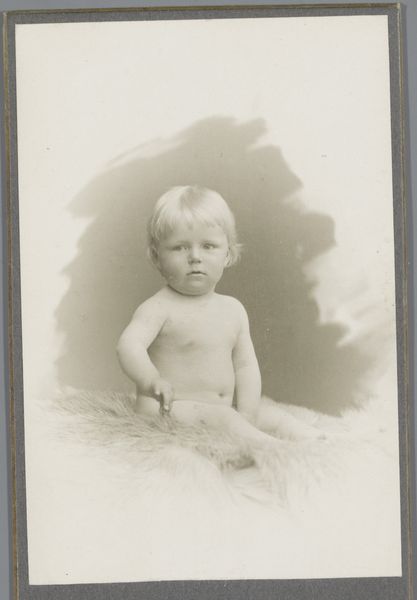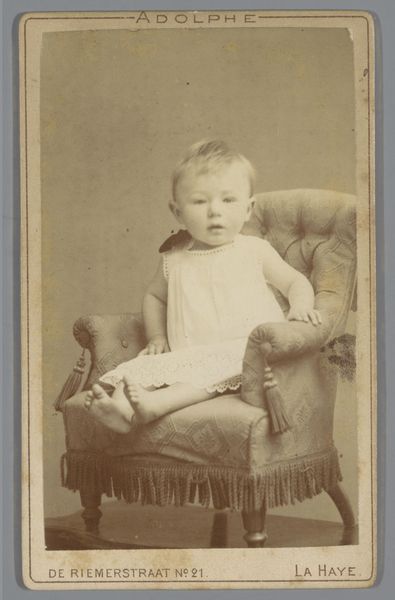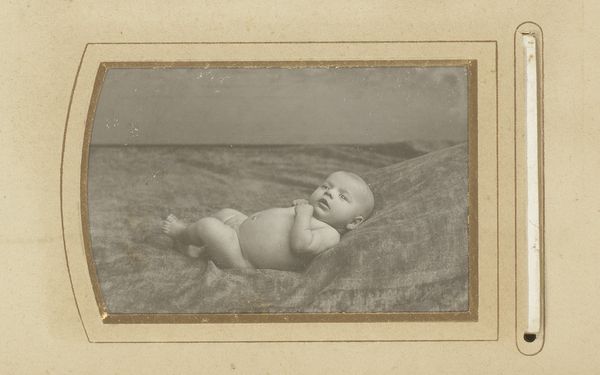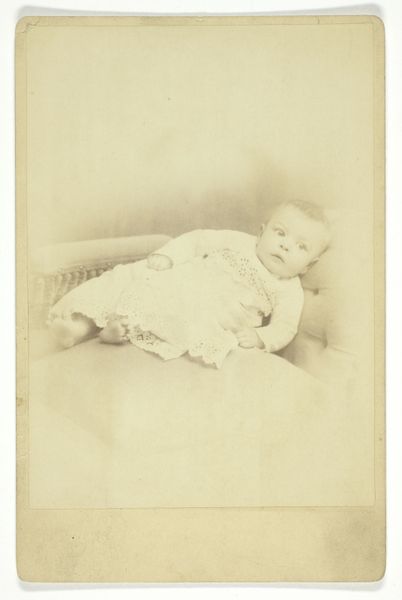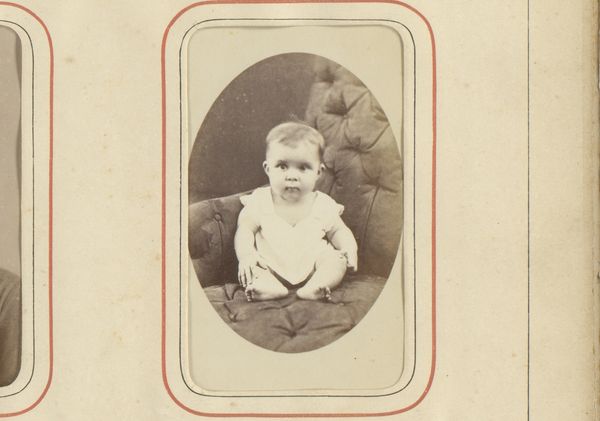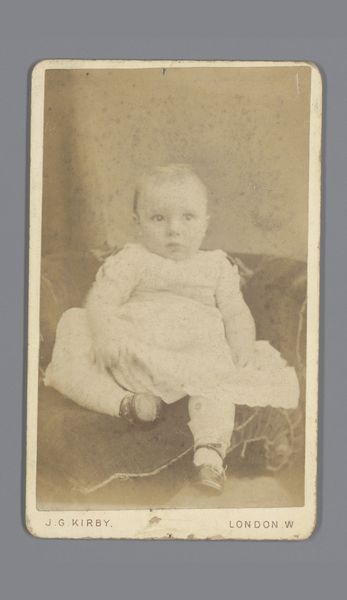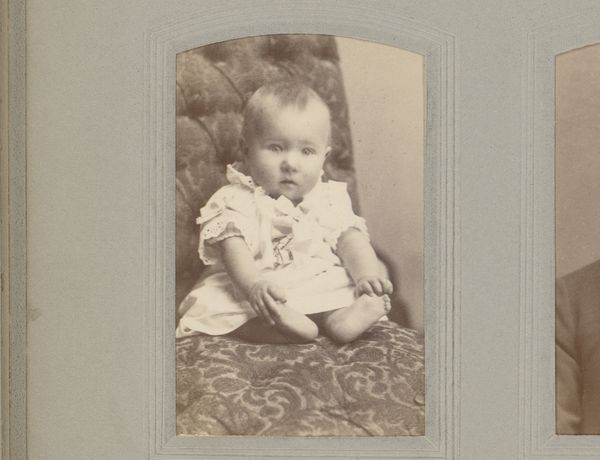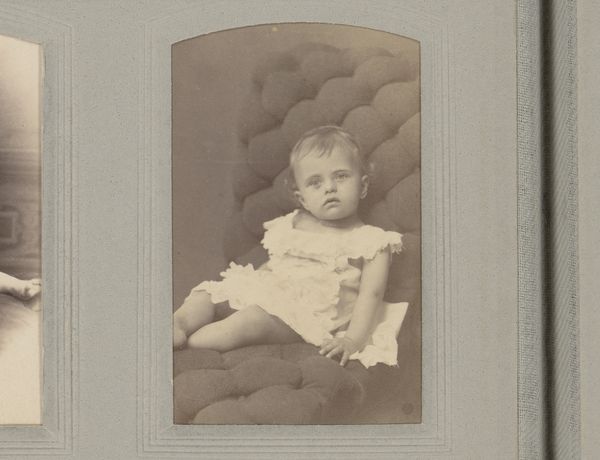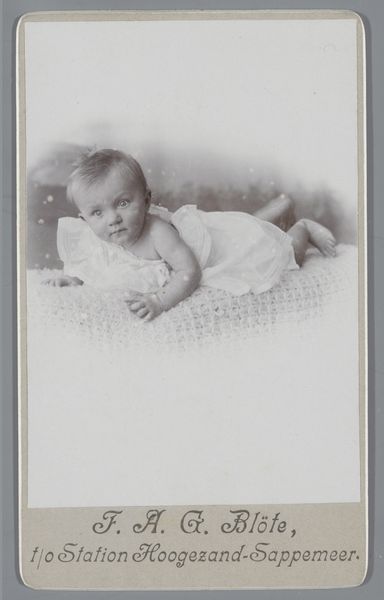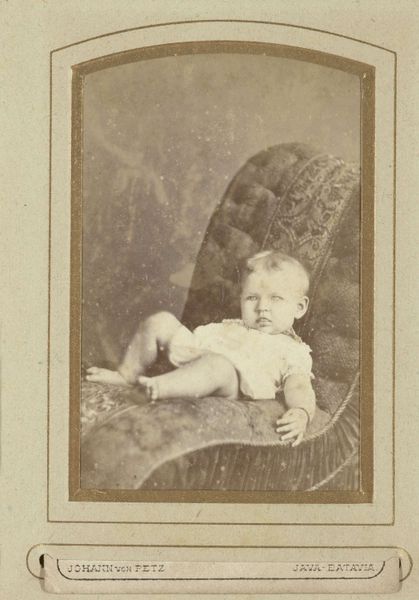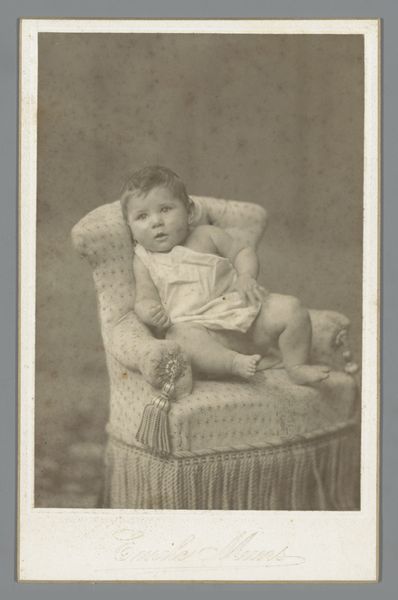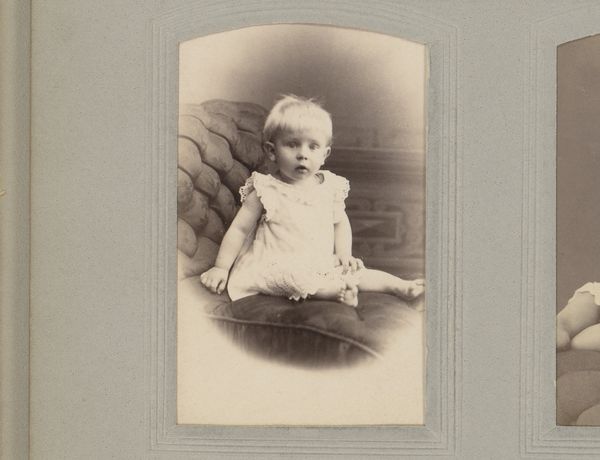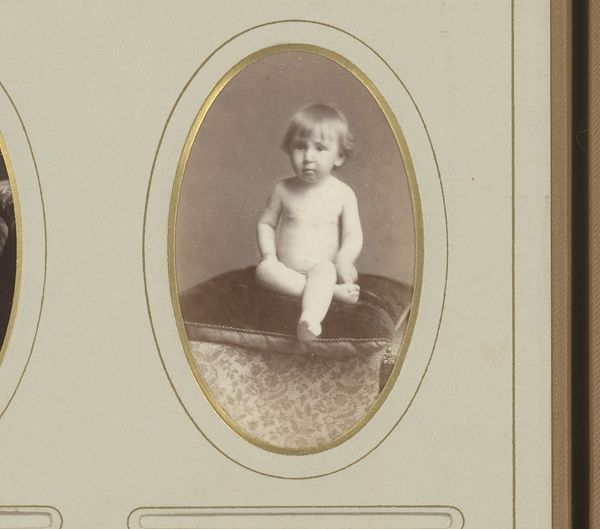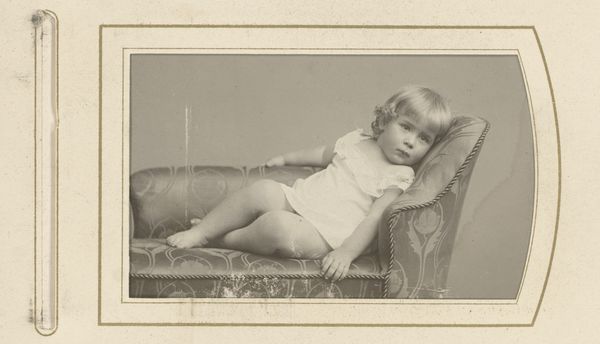
photography
#
portrait
#
pictorialism
#
charcoal drawing
#
photography
#
19th century
#
nude
#
realism
Dimensions: height 84 mm, width 50 mm
Copyright: Rijks Museum: Open Domain
Curator: What a fascinating image. This photograph, simply titled "Portret van een naakte baby, liggend op een kleed," or "Portrait of a naked baby, lying on a cloth," by Max B\u00fcttinghausen, dates to sometime between 1886 and 1906. Editor: My first impression is one of surprising stillness. The sepia tones give it an antique feel, but also lend the subject a quiet dignity. Curator: Absolutely. Consider the context. During this era, particularly with the rise of pictorialism, photography sought validation as an art form. How might the simple presentation of this infant, both vulnerable and serene, reflect that ambition? The photograph seeks to capture the real, whilst adhering to traditional painterly ideals. Editor: And let's look closer at the materials, which communicate just as much as the subject. This isn’t a glossy, high-contrast image. You see a soft focus. It really emphasizes the texture of the baby's skin and the textile underneath it. This material tactility asks us to engage differently. Curator: That textile is significant. It elevates a common household item, placing the infant, literally, on a sort of pedestal. It makes me think about class structures and societal expectations. Is there a subtext here of protection and innocence, perhaps speaking to then-current anxieties regarding childhood and social mobility? Editor: Maybe, but it also forces a material reading: this textile, likely handmade, embodies labor and skill. It blurs that line between high art and craft – between photography and the work embedded in the material production that supports the very possibility of this scene. It reminds me how much material goes into image making. Curator: A very important distinction! I’m also intrigued by the anonymity. B\u00fcttinghausen gives us very little identifying information. How much does that contribute to the portrait's universality – the viewer becoming almost a co-creator of meaning? Editor: Agreed, the absence of overt staging forces us to focus on the physical presence: how light plays across the baby’s skin, the folds in the blanket...a very deliberate aesthetic choice that points back to production. Curator: It is true, a really beautiful interplay of artifice and honesty that really brings up so many pertinent points. Editor: Precisely, a complex work that has helped us think more carefully about the artist's material consideration, and its significance for image production during that time.
Comments
No comments
Be the first to comment and join the conversation on the ultimate creative platform.
